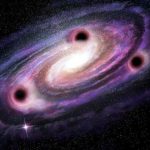Key Takeaways:
- Arrokoth, a distant Kuiper Belt object, is rich in complex organic molecules, including sugars, earning it the nickname “Sugar World.”
- The study sheds light on how cosmic rays interacting with Arrokoth’s methanol ice could have produced these complex organic molecules over billions of years.
- Arrokoth’s composition offers insights into chemical reactions that might have occurred in the early solar system and potentially on early Earth.
- The object’s large mounds suggest they might be original building blocks from the solar system’s formation.
- Ongoing analysis of New Horizons data and future missions hold promise for a deeper understanding of the Kuiper Belt and early solar system.
According to a study, Arrokoth, a far-off object in the Kuiper Belt, was given the name “Sugar World” due to its substantial organic molecule content, which includes complex sugars.
The Southwest Research Institute team led by planetary scientist Alan Stern conducted the study, which was published in the Proceedings of the National Academy of Sciences. The study offers new information about the chemical reactions that occurred in the early solar system and possibly on early Earth.
Arrokoth, formerly named as Ultima Thule and 2014 MU69, is the furthest object that a spacecraft has ever traveled to. On January 1, 2019, the New Horizons mission, which had previously taken amazing pictures of Pluto, conducted a historic flyby of Arrokoth. The object, which is situated in the Kuiper Belt, an area of icy bodies beyond Neptune, about 4 billion miles from Earth, was captured in great detail by the mission’s photos and data.

“We set a record! Never before has a spacecraft explored something so far away. I mean, think of it. We’re a billion miles further than Pluto, and now we’re going to keep going into the Kuiper Belt,” Stern said at the time, Space.com reported.
The presence of complex organic molecules is linked to Arrokoth’s unique reddish color, as discovered by researchers analyzing flyby data. These molecules consist of different kinds of carbon-rich compounds, water ice, and methanol.
Methanol ice on Arrokoth, when exposed to cosmic rays, was found to produce a variety of organic compounds, including sugars like ribose and glucose. These findings suggest that the surface of Arrokoth has undergone significant chemical processing, transforming simple molecules into more complex ones over billions of years.
Understanding the chemical processes that may have contributed to the emergence of life on Earth depends on the discovery of these organic molecules.
Will Grundy, a co-author of the study, said in a statement in October, “It’s amazing to see this object so well preserved that its shape directly reveals these details of its assembly from a set of building blocks all very similar to one another.”
Large in comparison to the object itself, the mounds on Arrokoth’s surface are thought to be some of its original building blocks. These characteristics offer important hints regarding the circumstances and activities that existed in the early solar system.
“If the mounds are indeed representative of the building blocks of ancient planetesimals like Arrokoth, then planetesimal formation models will need to explain the preferred size for these building blocks,” Stern said in his statement.
We are still receiving data from the New Horizons mission that may improve our comprehension of the Kuiper Belt and its objects. We anticipate that the spacecraft will investigate more targets in the Kuiper Belt, which will increase our understanding of the early solar system.
Stern said to Space.com, “It would be foolish not to search for another target.”


